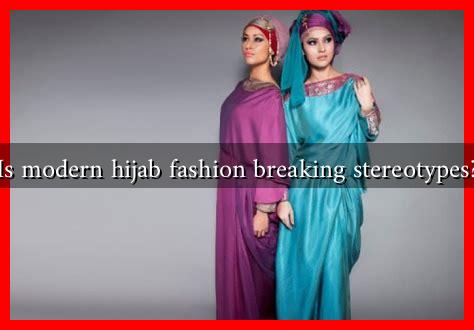-
Table of Contents
Is Modern Hijab Fashion Breaking Stereotypes?
The hijab, a traditional headscarf worn by many Muslim women, has long been a symbol of modesty and cultural identity. However, in recent years, modern hijab fashion has emerged as a powerful force in the fashion industry, challenging stereotypes and redefining perceptions of Muslim women. This article explores how contemporary hijab fashion is breaking stereotypes, promoting inclusivity, and empowering women around the globe.
The Evolution of Hijab Fashion
Historically, the hijab has been viewed through a narrow lens, often associated with oppression or backwardness. However, the rise of social media and the global fashion industry has transformed this narrative. Modern hijab fashion is characterized by:
- Diversity of Styles: From chic turbans to flowing capes, the variety of hijab styles available today allows women to express their individuality.
- Influence of Fashion Icons: Influencers like Halima Aden and Amina Muaddi have brought hijab fashion to the forefront, showcasing how it can be both stylish and modest.
- High Fashion Integration: Major fashion houses, including Dolce & Gabbana and Nike, have incorporated hijabs into their collections, signaling a shift in mainstream acceptance.
Challenging Stereotypes
Modern hijab fashion is not just about aesthetics; it is also about challenging societal stereotypes. Here are some ways in which it is doing so:
- Empowerment: Wearing a hijab is a personal choice for many women, and modern fashion allows them to embrace their identity confidently.
- Visibility: The presence of hijab-wearing models in advertising campaigns and runway shows has increased visibility, helping to normalize the hijab in various contexts.
- Breaking Barriers: Women like Ibtihaj Muhammad, the first American athlete to compete in the Olympics wearing a hijab, have shattered stereotypes in sports, inspiring others to pursue their passions.
Case Studies: Brands Leading the Change
Several brands have taken significant steps to promote hijab fashion and challenge stereotypes:
- Modanisa: This Turkish online retailer specializes in modest fashion and has become a global leader in hijab styles, offering a wide range of options for women of all backgrounds.
- Nike: The launch of the Nike Pro Hijab in 2017 was a groundbreaking moment, providing Muslim athletes with performance gear that respects their cultural values.
- H&M: The brand’s inclusion of hijabs in its collections has made modest fashion more accessible, appealing to a broader audience.
Statistics and Trends
The impact of modern hijab fashion is evident in various statistics:
- A report by the market research firm, Statista, indicates that the global modest fashion market is expected to reach $361 billion by 2023.
- According to a survey conducted by the Pew Research Center, 62% of Muslim women in the U.S. feel that wearing a hijab is a personal choice that empowers them.
Conclusion: A New Narrative
Modern hijab fashion is undeniably breaking stereotypes and reshaping the narrative surrounding Muslim women. By embracing diversity, promoting empowerment, and challenging societal norms, hijab fashion is not just a trend; it is a movement. As more brands and individuals continue to support this evolution, the hijab will increasingly be recognized as a symbol of strength, identity, and style. The journey towards inclusivity and acceptance is ongoing, but modern hijab fashion is paving the way for a brighter future where all women can express themselves freely and confidently.

